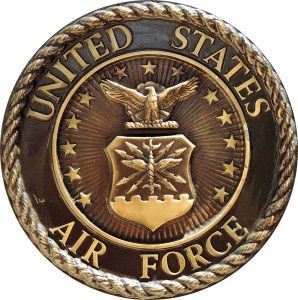
The United States Air Force gained its independent status on September 18, 1947, through the National Security Act of the same year. With a history of over seven decades and brave men and women at the forefront, you can be sure the service will chalk many more years. As an integral part of US military history, their innovative, cutting-edge technology continues to make the Air Force one of the most admired services in the world. The focus here, however, is on the periods leading up to its autonomy as a separate military branch.
1907: The Aeronautical Division of the US Army Signal Corps
According to history, the interest in the aerial military came about after the successful first-ever flight by airplane inventors, the Wright Brothers, in 1903. When the military saw the promise these airplanes held in the area of security, they planned to create a special division for it. So, in 1907, four years after the first flight, The Aeronautical Division of the US Army Signal Corps was born. The division became the military’s aerial wing, and its primary role was ensuring aviation technology development. The Aeronautical Division also had oversight responsibilities for training military pilots at the time. The division made great progress right from its establishment and soon after had its first Commander, Captain Charles DeForest – a pioneering aviator with an aeronautical background from the Massachusetts Institute of Technology (MIT).
1914 – 1918: World War I
World War I began only seven years after the Aeronautical Division had started its operations. Established just in time for a global conflict, the aviation section of the US Army Signal Corps carried out crucial tasks that helped significantly in steering the outcomes of the war. Its roles spanned from surveillance to reconnaissance and air combat to support ground troops. During World War I, the US Army Signal Corps Aviation Section played a critical role in areas including:
- reconnaissance
- surveillance
- air combat
The aviation component of the US Army could fly into areas where on-ground soldiers could not go, which played a significant role in establishing the country as a military force to be reckoned with. That contributed to over 190,000 aviation personnel enlisting by 1918 when the war ended. Personnel consisted of support staff, mechanics, and skillful pilots.
1941-1945: World War II & Two Years After It Ended
Twenty-three years after WWI ended, the Second world war began. World War II was another opportunity for the aviation division to show its growth and mastery in aerial combat. Although history credits the success to an Allied victory, there are no questions about the role strategic bombing campaigns played in helping ground troops. Two years after World War II, the US Army Air Forces realized it needed autonomy as a separate US military branch. It led to the birth of the United States Air Force on September 18, 1947.
The birth of the US Air Force was also made possible when President Truman signed the National Security Act in 1947, making the Air Force a separate but equal power to the United States Armed Forces. Indeed, the separation and subsequent autonomy were good because they allowed the Air Force to focus on its capabilities and unique mission. So, every year on September 18, 1947, the US Air Force celebrates its remarkable existence as a powerful autonomous military body.
Conclusion
The Air Force has existed for many years, chalking many feats and making an indelible mark. This year marks the 76th birthday of the US Air Force.
